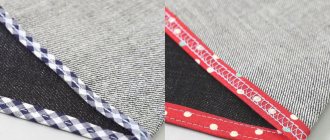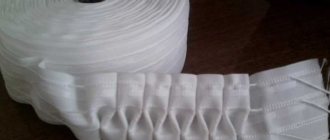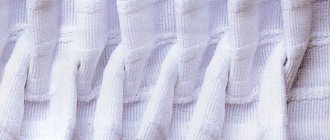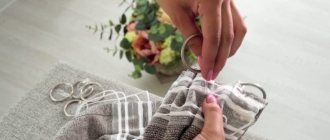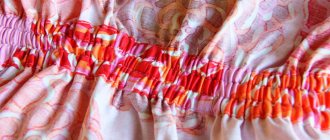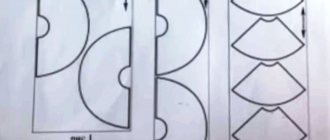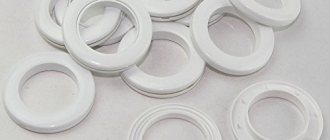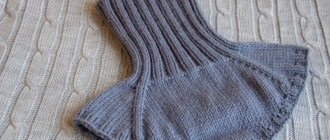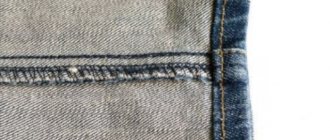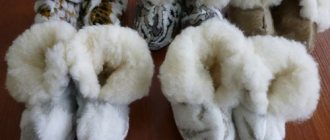Curtain (furnishings) tape is a braid, along the entire length of which cords are laid to create folds and holes or loops for attaching the product. Such fittings make it easier to sew window textiles, eliminating the need to create loops and folds directly on the fabric. It is not difficult to sew curtain tape of any size to curtains, the main thing is to make the correct calculations and follow the step-by-step instructions.
What is curtain tape
Curtain tape is a narrow strip of thick fabric with small overstitched holes (on cheap options they are not overstitched). A dense thread or another ribbon of dense material passes through these holes. It is pulled out slightly and attached to the curtain hooks. The ribbon itself is sewn to the top of the curtain.
Thus, the curtain tape is the element that holds the curtain to the curtain.
curtain tape
How to choose and sew curtain tape: master class + video
What is curtain tape and why is it needed?
Photo: derbybraid.co.uk
Curtain tape is a special braid that greatly facilitates the process of sewing curtains and creating a beautiful, uniform drapery on them. Several cords are stretched along the entire length of the tape - they allow you to add folds to the curtains and make drapery. The tape also has a special strip in which holes are made for threading hooks to hang the finished curtain. The tape is sewn to the finished curtain from the inside out at the top.
Fashionable curtains 2018: main trends and photos
What types of curtain tapes are there? How to choose the right one?
Curtain tapes differ in several ways.
1. Width
The width of the tapes is from 1.5 to 10 cm.
A narrow tape is used for light curtains, a wide one for heavy ones, for example, curtains.
Photo: starcurtaintape.com
2. Transparency
Curtain tape can be translucent or thick, white.
Transparent braid is used for curtains made of light translucent fabrics. White - for everyone else.
Photo: integralbook.com
Photo: williamgee.co.uk
3. Possibility of forming folds
The cords in the curtain tape can be pulled evenly or in a certain “pattern”.
Depending on this, the tape makes it possible to make simple folds and waves or curly folds on the curtain.
Photo: cheerycurtains.com
4. Mounting method
Curtain tapes can be sewn or glued.
The second option is attached to the fabric using an iron and is only suitable for light and short curtains, since the fastening is not very strong. The first option is the most common and reliable.
In fact, the range of curtain tapes and the effects they help achieve is quite wide. The best option is to have basic knowledge and consult with the seller in the store, telling him about the curtains, the method of fastening and the desired result.
DIY Roman blinds: 3 master classes of varying difficulty
How to choose the width of the curtain and the length of the curtain tape
Photo: gopelling.net
Curtain tape is sewn along the top edge of the curtain along its entire width. Therefore, the length of the curtain tape should be equal to the width of the finished curtain + about 10 cm per hem. So, if you have ready-made curtains, you can easily calculate the required length of the tape (if there are two curtains/drapes, do not forget to add 10 cm to the length of the tape for each panel).
If you are just choosing the width of future curtains, you should focus on the width of your cornice (not the window!) and know about the so-called assembly factor. The coefficient of assembly is the degree of “folding” and fluffiness of the curtains. It depends on what type of curtain pleats you choose. If this is a regular uniform drapery, the coefficient is usually equal to 2. For figured draperies, the coefficient is usually equal to 2.5.
Photo: stitched.co.uk
Let's say the length of your cornice = 2 m. You want to make one curtain with a simple drapery.
2 m x coefficient 2 = 4 m (width of the finished curtain).
4 m + 10 cm per hem = 410 cm (length of curtain tape).
How to sew curtains with your own hands: simple master classes and interesting ideas
How to sew curtain tape: master class
So, the curtains and curtain tape have been selected. All that remains is to sew the ribbon to the curtain.
To do this you will need:
- curtain and curtain tape of the required length;
- pins;
- a large needle with a thick eye;
- sewing machine and threads to match the color of the curtain fabric.
Sequence of work:
1. At the edge of the curtain tape, pull out all the laces, thread a large needle through the eye and secure it to the tape - this is a great way to avoid sewing up the laces (which you should avoid).
1. Lay the curtain face down on your work surface. If your curtain is not already hemmed at the top, fold in the top edge.
2. Apply curtain tape to the top edge of the curtain. Please note: the loops for the hooks must remain on top. Bend the end of the tape inward, as shown in the photo, and secure with a pin. If the curtain is already hemmed at the top, just carefully bend the tip of the tape inward and secure it.
3. Pin the entire ribbon to the top edge of the curtain. From the opposite end, also tuck the tip of the tape inward (if necessary, shorten the tape before doing this).
4. Sew the ribbon to the curtain as shown in the photo.
5. All that remains is to tighten the laces in the ribbon, insert the hooks and hang the curtain on the curtain rod.
Photo and source: thehousethatwill.com
How to sew curtain tape to a curtain: another master class
This method is slightly different from the one above. It is well suited for sewing wide ribbons to curtains made of thick fabrics.
You will need:
- curtain and curtain tape;
- pins;
- sewing machine and threads to match the color of the curtain fabric + white threads.
Sequence of work:
1. Lay the curtain face up on your work surface.
2. Having turned the ends of the curtain tape, pin it to the top edge of the curtain along its entire length and secure with pins. Please note: the loops for the hooks should be on top, and the edge of the tape should protrude slightly beyond the edge of the curtain fabric.
3. Sew the tape along the side farthest from the edge (be careful not to stitch the laces, or use the method for securing them from the tutorial above).
4. Fold the top edge of the curtain with the ribbon inside and stitch the ribbon from the inside out.
5. For strength, place another line along the middle of the curtain tape.
Clearly - in the video:
Types of curtain tapes
Tapes are classified into different types depending on certain factors.
According to the degree of transparency, they are of two types.
- Transparent. Made from polymer material or thin fabric. Fishing line is used instead of threads. Sewn to thin curtains (for example, tulle).
- Opaque. Suitable for thick curtains that are not see-through. Made from thick white fabric.
Depending on the method of fastening to the curtain, there are two types of tapes.
- Sew-on. Traditional option. To secure the product to the curtain, it must be sewn.
- Adhesive. On one side of such tapes a special glue is applied, which is activated under the influence of high temperature. The product is applied to the curtain and then ironed with a hot iron. After that it is fixed. A less reliable option than sew-on ones - over time, the glue may lose its original properties.
Depending on their purpose, tapes are divided into two types.
- Horizontal. Designed for fixing curtains. They are mounted horizontally in its upper part.
- Vertical. They play an exclusively decorative role. They are used to give curtains the desired appearance (in particular, to create ruffles). As a rule, they are mounted in a vertical plane.
cornice
How to sew a ribbon for a curtain
Considering the simplicity of the structure of such an element, you can try to make it yourself. This option is suitable for cases when it is not possible to find a suitable variety.
Instructions:
- Prepare the braid. Its width is determined taking into account the density of the curtain. You will also need fishing line or nylon thread. The length depends on the width of the braid. So, if it is standard, it is enough to skip 2 rows. The wider the strip, the more cords you will need.
- If you have a large needle at hand, you can pass a nylon thread through it. Then stitches are made across the entire strip. These steps are repeated 2 times or more. There should be some distance between the cords.
- To hang the curtain on the curtain rod, fasteners are provided on the strip. Common means: hooks and loops. The first of them involves point fastening of each element at the top of the saddlery or in the center. The second method is implemented by sewing a thinner (satin) ribbon along the middle line of the braid. Immediately form loops protruding above the surface. Stitches are made between them to secure it to the product.
- Sew the curtain strip onto the finished edge.
Polyester is chosen for production. This material does not shrink.
Methods for sewing curtain tape
There are several ways to hem ribbon to a curtain.
- Manually. The simplest, but most unreliable method. The fact is that if you hem the tape to the tulle, it is very easy to damage its structure with a needle. This is a very thin material, and it is extremely easy to damage the integrity of the fabric. In addition, using this method it is not possible to achieve a completely even stitch. As a result, the load is distributed unevenly across the curtain and, as a result, after some time, tears may appear on it. If there is no other way to secure the ribbon, then you need to take a very thin needle and be extremely careful.
- On a sewing machine. If you have a sewing machine at home, then it is preferable to sew not by hand, but with its help. This is due to a number of factors. Firstly, this method is much faster than manual work. And secondly, the sewing machine provides an even stitch, which evenly distributes the load across the curtain and prevents damage to the integrity of the textile.
- In the studio. The third way is to take the curtain to a studio. It is the simplest because it does not require sewing skills. However, it will require certain costs - you will have to pay for the services of the studio. How much do the studio services cost? It all depends on the company’s pricing policy, the locality in which it is located, the volume and complexity of the work. Usually the cost is in the range from 100 to 500 rubles.
curtains
How to sew curtain tape to tulle: step-by-step instructions
Here are step-by-step instructions to help you sew curtain tape onto tulle by hand. To do this, you will need to complete the following steps.
- Check whether the seller cut the curtain straight. If not, then it will need to be trimmed.
- Carefully iron the curtain and treat the cut area. To do this, it is bent and passed with a hot iron. As a result of this smoothing, it remains folded.
- Apply the tape to the curtain along its entire length and mark it with a pencil or chalk. This is necessary so as not to get lost during further sewing and to maintain the right direction.
- Carefully sew on the ribbon using a thin needle.
If a sewing machine is used to sew on the braid, then the procedure will be no different, only the last stage of the work will be carried out using this device.
If you want to leave the tulle straight, no additional steps are required.
tulle
Types of curtain tapes are determined by their purpose
Each type is designed to gather the fabric in a certain way.
The threads for tightening the tape must be pulled out from under the seam.
To buy braid of the required size, you should determine the density of curtain gathering. Each density corresponds to a coefficient that determines the required dimensions of the ribbon for the curtain being designed. For example, a ratio of ½ means: to get 1 m of finished curtain, you will need two meters of curtain fabric; 1/3 - you need 3 meters and so on.
You need to add 10 centimeters to the resulting length to bend the edges.
The selection of curtain tape according to the coefficient is based on the assembly of what shapes are planned to be laid on the drapery:
- those collected simply will not require a large consumption of material, the coefficient for it is 1.5;
- gathers like ruffles, puffs or waffles need double factor braid;
- folds like “rays” and “bows” - coefficient 2.5 times;
- For cylinder and triple folds, a factor of 3 should be provided.
The finished curtain must be ironed and the tape tightened to the planned width.
In most cases, curtain tape is made from polyester fabric. The advantages of the material are obvious: tight fit to the curtain, strong hold of the canvas over the entire width, eliminating sagging and deformation of the curtains.
Related article: How to make a hammock with your own hands at home?
What can curtain tapes consist of:
- from rings for eyelets;
- from pockets for hooks;
- from seals for the rigidity of the lambrequin;
- of two, three or four cords.
They produce a version of the braid that is glued to the curtain fabric using Velcro; it is not equipped with cords. All tapes are attached differently and have different devices for these purposes. They produce “universal” tapes with a multi-level arrangement of loops and pockets. They can be used on rail baguettes, as well as on rod ones. Curtain tapes made of translucent materials are intended for tulle curtains or those made of organza.
Forming folds in tulle using sewn curtain tape
If you need to give the curtains an original design, form folds and frills, this can also be done using tape. To do this you will need to do the following:
- determine the place where the fold will be located;
- pull the thread of the tape in it towards the back of the curtain.
That's all, actually. As you can see, it's quite simple. But while working, you shouldn’t be too zealous - if you tighten the thread, the fold will be too large, and there simply won’t be enough thread to form frills in other places.
Curtains
Step-by-step instructions, procedure
In order for tulle to fit organically into the interior of the room, you should pay attention not only to its color, texture and density, but also to how the tulle looks in the window opening. Is it too long or short, does the drapery fall down nicely and are the edges of the material even?
Any detail, even one that you think is insignificant, can easily ruin the entire appearance of the tulle.
This can be prevented with the help of such a small detail - curtain tape. It will help shorten the curtains and create a beautiful drapery. Below are detailed step-by-step instructions on how to sew curtain tape to tulle.
It is enough to know a few simple conditions.
Common mistakes when sewing tulle and curtain tape and how to avoid them
Those who try to sew a curtain and ribbon on their own for the first time often make mistakes. Let's look at the most common errors and ways to eliminate them.
- The braid is sewn unevenly. The reason for this problem is incorrect basting or its complete absence. The only way to solve this is to carefully rip off the ribbon, make a correct, even basting and sew the ribbon again.
- The frill is too big. This happens when the ribbon thread is pulled too tightly. The result is an excessively large frill in one place and the inability to create folds in another. Solving the problem is quite simple - you need to carefully pull the thread back. Sometimes it is very difficult to do this with your hands. In this case, use a pin or sewing needle.
- The tulle is damaged by a too thick needle or strong jerks when sewing by hand. Most often, in such cases, the curtain is cut or folded at the site of damage. You need to understand that after these procedures it will become several centimeters shorter. Therefore, when sewing by hand, you need to be extremely careful and careful.
- Lack of tape length. This happens if you measure the braid incorrectly. As a result, it does not cover the entire curtain. If you do not plan to make ruffles and the tape is used only for fixing it on the curtain, then you can carefully hem the missing piece. If the braid is needed to create texture, then only its complete removal and sewing on at a suitable length will help. In general, it should be slightly larger than the dimensions of the curtain. This is due to the fact that after washing the ribbon can shrink and crumple the curtain. This will ruin her appearance.
- Lack of thread fixation. In most tapes that are offered in stores, the threads are not fixed in anything. This is due to the fact that the braid is sold by length and is constantly cut. Before sewing, you should make small knots at its ends (even better, sew them to the ribbon). This will prevent the thread from slipping deep into the tape, which can lead to a change in the texture of the curtain, the disappearance of formed folds (and if the tape is used to fix it on a curtain, then to a complete or partial fall).
- Damage to the screed. Each braid has a tightening seam that makes it stronger. As a rule, it is located in its lateral parts. The seam is easy to damage during operation. The only solution in this case would be to file a new product. Therefore, you need to be very careful and careful.
